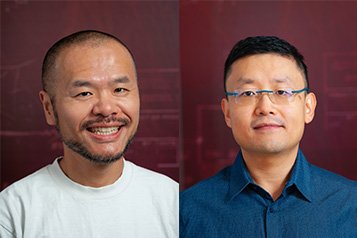Yao-Yi Chiang, Chang Ge Support NSF Convergence Accelerator Phase 1 Project at UMN

Department of Computer Science & Engineering (CS&E) faculty members Yao-Yi Chiang and Chang Ge are part of a research team at the University of Minnesota that was selected to participate in Phase 1 of the U.S. National Science Foundation Convergence Accelerator’s convergence research Track L: Real World Chemical Sensing Applications. The interdisciplinary team is developing Aquasense, a low-cost, compact, easy-to-use, rapid water quality sensor platform enabled by artificial intelligence (AI).
The Aquasense platform will aim to make water quality analysis accessible to all, from government agencies and companies to individual users. Created by Tianhong Cui, these innovative graphene microsensors are cheaper, faster and more sensitive than existing technologies, and utilizes networked sensor arrays to allow for real-time, wireless data transfer.
“This NSF grant is very different from other grants,” said Chiang. “This one is interdisciplinary centered; we will work together to build a new system that can bring real value to the market. During the project, we participate in a course hosted by NSF that teaches us how to interview potential end users and stakeholders, how to talk about our technology, and how to work together on an interdisciplinary team.”
Cara Santelli (Earth and Environmental Sciences) is the lead researcher on the project, with Cui (Mechanical Engineering) leading the work on building the sensors and John Sartori (Electrical and Computer Engineering) building the system that collects data and sends it to a secure cloud platform. That’s where the CS&E team comes in.
“If you think about the data flow from the sensors to the ultimate analysis, there is a gap in between each of these touch points,” said Ge. “In order for Yao-Yi (Chiang) to build AI algorithms and models, the data needs to be collected from the remote sensors into a central repository. My role is to fill the gap between the raw, remote data on the sensor's side to the prepared data that can be analyzed. I am responsible for data collections, preparation, cleaning, and transformation.”
Chiang’s work will focus on developing AI and machine learning models to predict the water quality in locations without sensors. With the help of Ge, all private data will be accessible for machine learning predictions without compromising its security and privacy requirements.
“There are limited resources and few locations where the sensors can be installed, so AI can help cover some of those gaps,” said Chiang. “AI can reduce the number of sensors that we need to use, and reduce the amount of time it takes for humans to maintain these sensors. We can plot the point sensor data on a map, but water analysis is not point data. We are talking about dynamic bodies of water. AI can help take the point data and better estimate what is really going on.”
Phase 1 of the project consists of a nine-month planning effort. Each team is awarded funding up to $650,000 to further develop the initial concept, build a team, participate in the NSF curriculum, and develop a prototype. If selected, Phase 2 will begin in 2025 with potential funding up to $5 million over 24 months.
“This is an exploratory process,” said Ge. “Each part of this project - the sensors, the data management, the analysis - is just a piece of the technology. We will need to work together to make sure that each of these state-of-the-art technologies gets integrated effectively into a holistic, end-to-end system.”
“The Data Science Initiative (DSI) played a very important role in enabling this type of interdisciplinary initiative,” said Chiang. “I am very grateful for the opportunity to be involved with this project and was introduced to it through DSI.”
Learn more about the Aquasense project in the full College of Science and Engineering story.